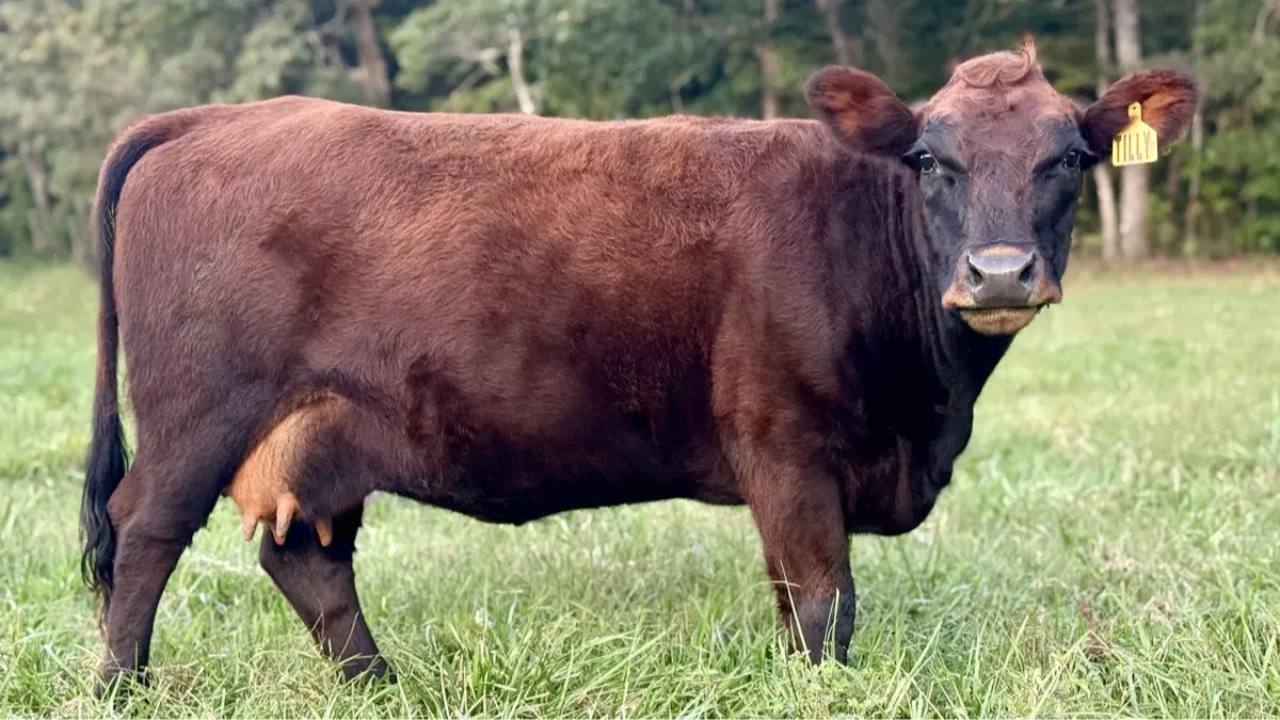Dexter Bulls
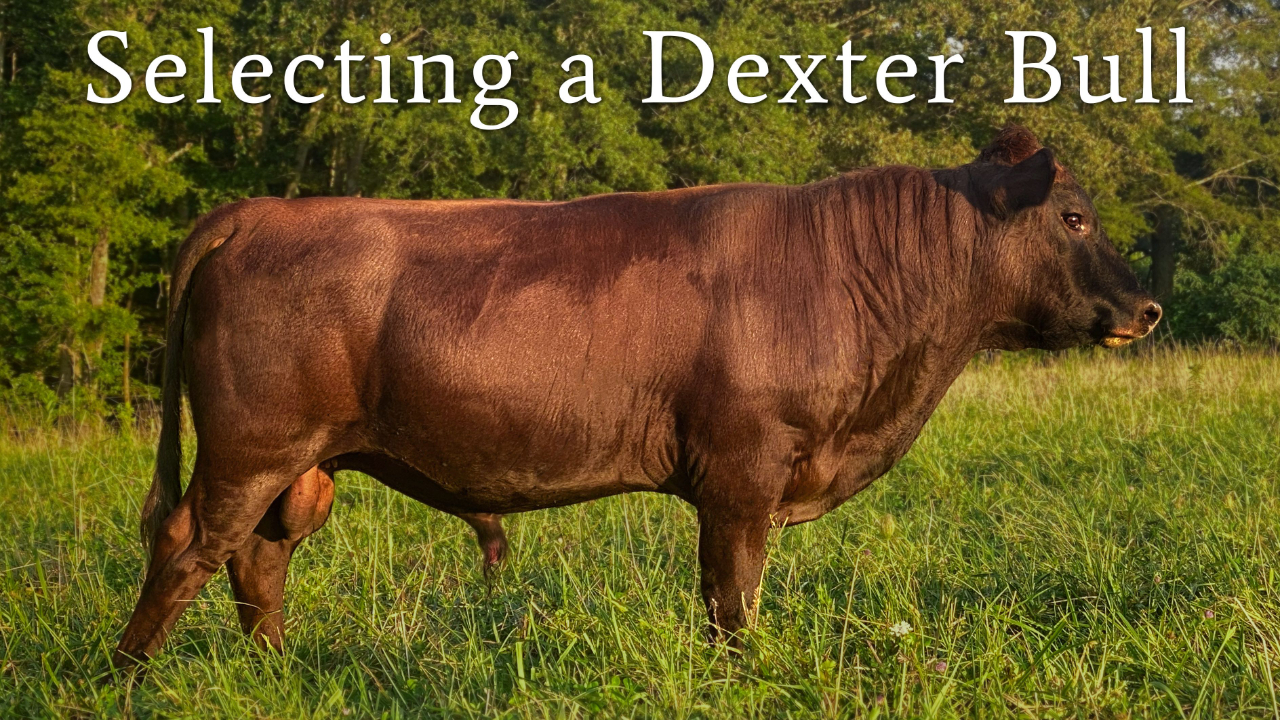
I cannot stress enough how much care should be put into the selection of a sire for your Dexter herd. No other single investment is so important in determining the future caliber of the herd. The proper sire can, in just a few short years, create a superior herd from mediocre cows, but a poor sire can ruin an already well-established high-grade herd. Other breeders will often judge the value and importance of a herd by the quality of the sire at its head.
A bull is not just one animal of the many in your herd -- the bull is 50% of your herd!
Very few bull calves should ever wear the title of herd sire. However, the market is flooded with mediocre and even sub-par Dexter bull prospects. Why aren't more bull calves castrated? I've seen reasons as silly as "Dun is a rare color in a bull so he's being made available as a herd sire." Color is the wrong reason to choose any Dexter pairing! I've also personally witnessed a Dexter breeder say that they couldn't catch the calf to steer him so they were selling him as a bull.
With so many inferior specimens, the problem, then, is how to secure a high-caliber herd sire.
Characteristics of a Bull
I personally prefer to select a bull calf so that I can raise him myself from weaning to adulthood. This allows me to observe his personality, halter train, and in general, be more comfortable with handling him alone as an adult. This does pose some risk as the ability of a young bull to pass along excellent genetics always remains a question until his daughters are milking. Even with the most careful attention to detail in selection and an exhaustive study of the pedigree, disappointments may occur. For this reason alone, many prefer to purchase a proven sire.
When purchasing a bull calf, in addition to the physical characteristics briefly outlined in our Dexter Structure article, you should also confirm that there is consistently good conformation in his pedigree. At a minimum, his sire, dam, grand-sires, and grand-dams should display excellent conformation including their udders. The more proven conformations along the pedigree, the better the chances of having a really exceptional herd sire. Selecting a bull whose sire, dam, and sisters have proven records takes a bit of the risk out of choosing a bull calf.
Temperament
The number one most important consideration in any herd sire is temperament. Pay special attention to the temperament of a young sire. If you see any of the following, consider it a warning that the bull in question perhaps isn't the best choice:
- lowered head
- growling
- head butting people
- erratic, wild behavior, flighty
- throwing of dirt with front feet
- charging
- "staring you down" (trust me, you'll know)
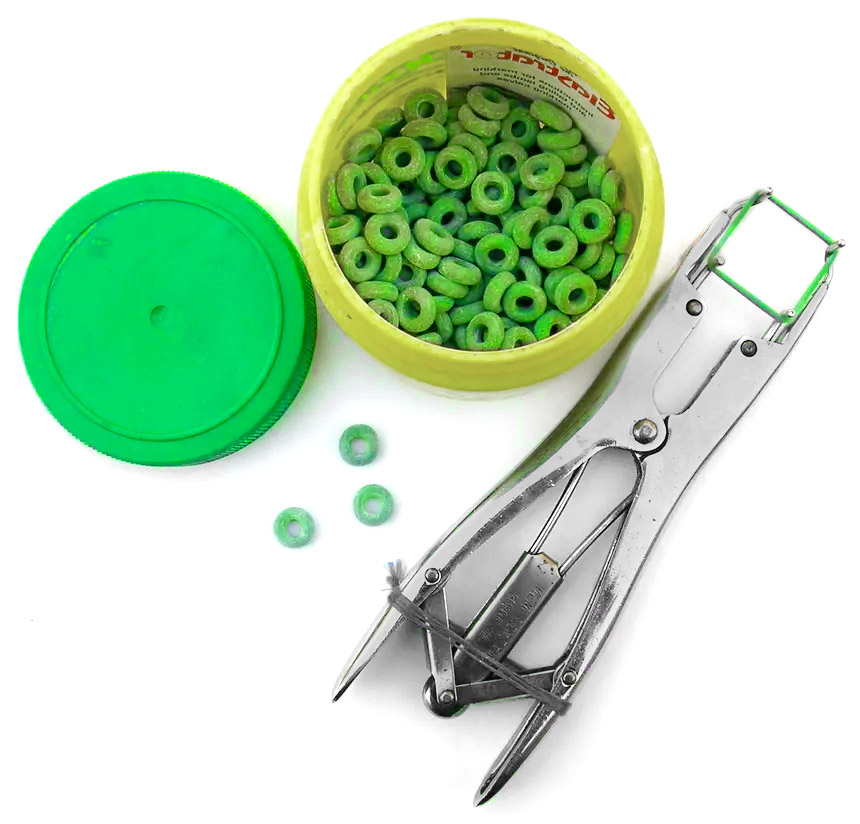 Seeing a 6-month-old bull that you can easily control without risk of injury do the things on this list can be funny. However, they should be considered alarm bells because what's funny at 6 months quickly fades to terror and can even be deadly with an adult bull. There is a one-strike rule for aggressive behavior from a bull at Mountain Heritage Farm. One misstep and they get the green cheerio (also known as, castration).
Seeing a 6-month-old bull that you can easily control without risk of injury do the things on this list can be funny. However, they should be considered alarm bells because what's funny at 6 months quickly fades to terror and can even be deadly with an adult bull. There is a one-strike rule for aggressive behavior from a bull at Mountain Heritage Farm. One misstep and they get the green cheerio (also known as, castration).
The temperament of the sire is more important than any other single member of the herd as he will pass both good and bad along to his progeny.
All bulls at Mountain Heritage Farm are required to have the "big dog" temperament that Dexters are known for. Even so, I always show proper respect to our bulls. Even the best-tempered, most even-keeled bull can have an off day when there's a cow in estrus. Never turn your back on a bull, no matter how gentle, and always have a planned route of escape.
Avoid "Bullish" Calves
I am about to make the most counterintuitive statement on bull selection you've ever heard:
Do **not** choose the bull calf that looks bullish at only a few months old.
Napoleon is still looking very much like a baby at 6 months old.
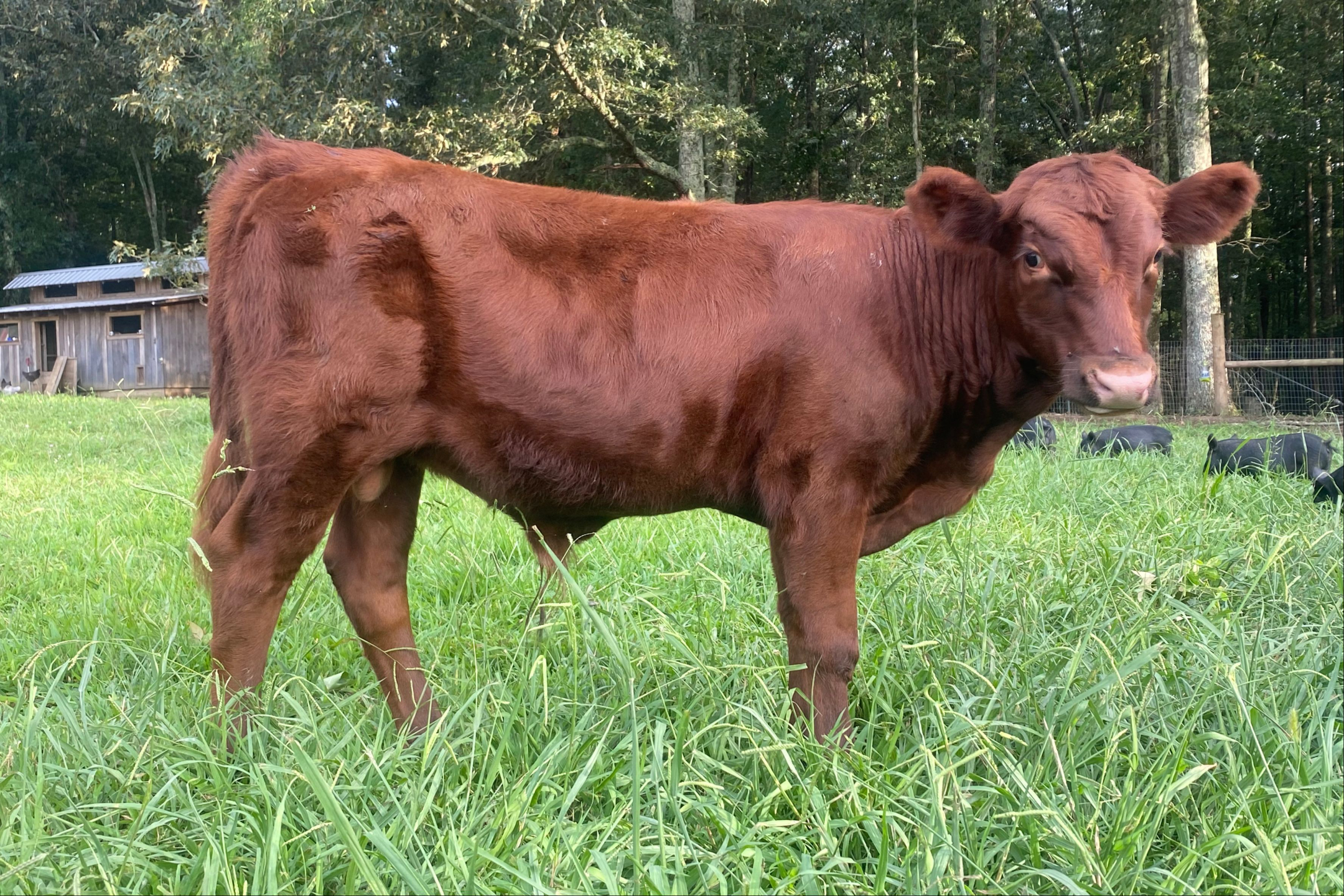
It's human nature -- we go shopping for a bull calf and we're instinctively going to choose the one that looks the most bullish. Stop to consider why one young bull calf would look bullish when another doesn't. He is maturing earlier. Yes, this makes him look appealing but at what cost? A bull that matures early will pass that trait along to his daughters. Continue this young, bullish pattern for a while and before you know it, you've got four-month-old heifers experiencing their first estrus. Since a Dexter heifer shouldn't be bred before 14 months of age, this is a management nightmare!
It is much better to have a bull calf that looks like a baby for an extended amount of time and delay the first heat in your heifers until closer to one year old. If his sire matured into a lovely specimen of bull masculinity, then your little baby bull calf will eventually mature too. Also of note, Dexter bulls can take three to four years to fully mature. However, by age two there should be clear muscling and masculinity.
Two-year-old Belle Fourche Baloo is in prime breeding condition as a young herd sire.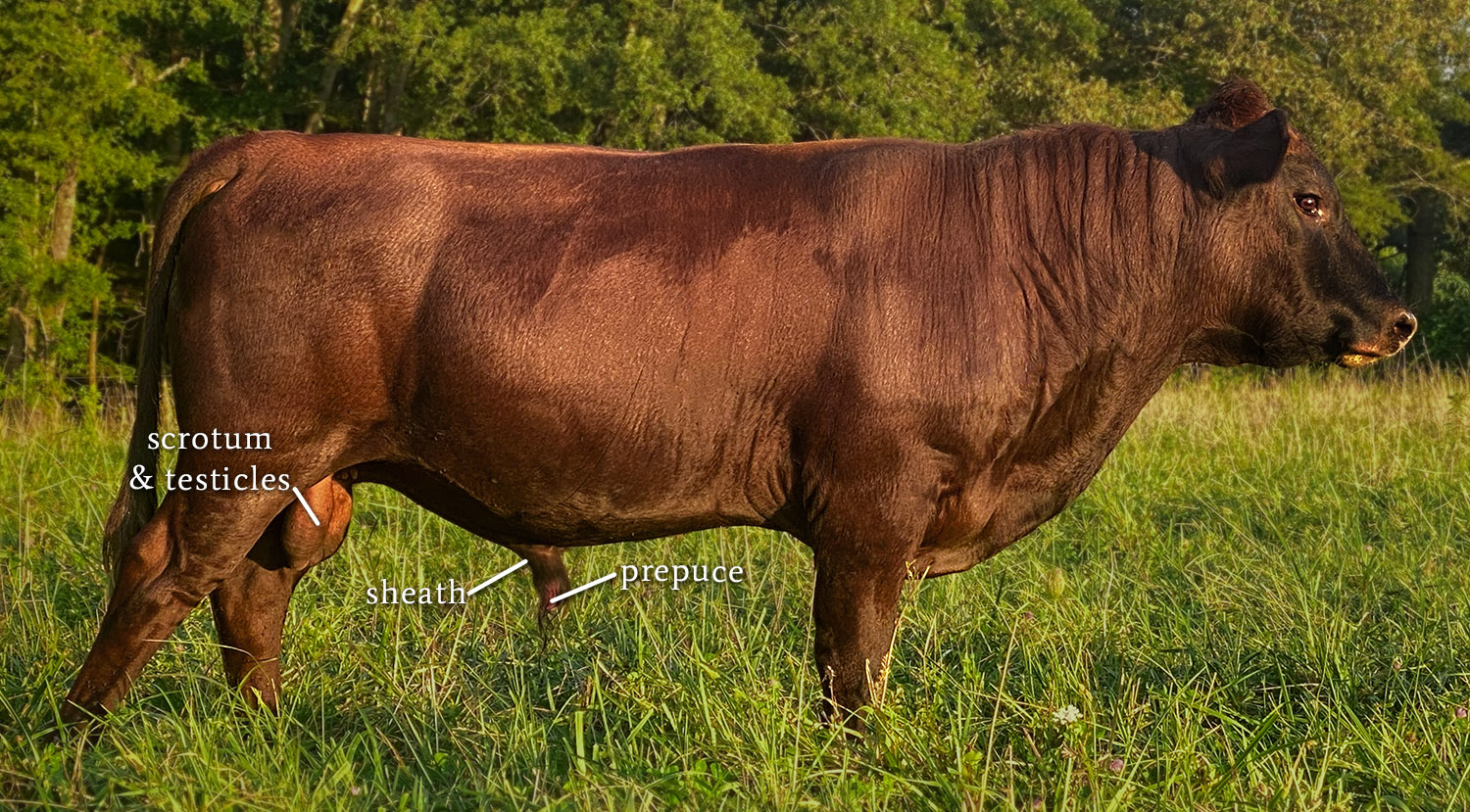
Dexter Testicles
The first bull here at Mountain Heritage Farm came as a sprightly 5-month-old. As he grew, I realized he had malformed testicles. One testicle was near normal size but was too round, squishy, and fluid-filled. The other testicle was tiny -- we actually thought he was a monorchid for a while. In the end, after several discussions with our vet, we decided castration was the best course of action. It was a heartbreak.
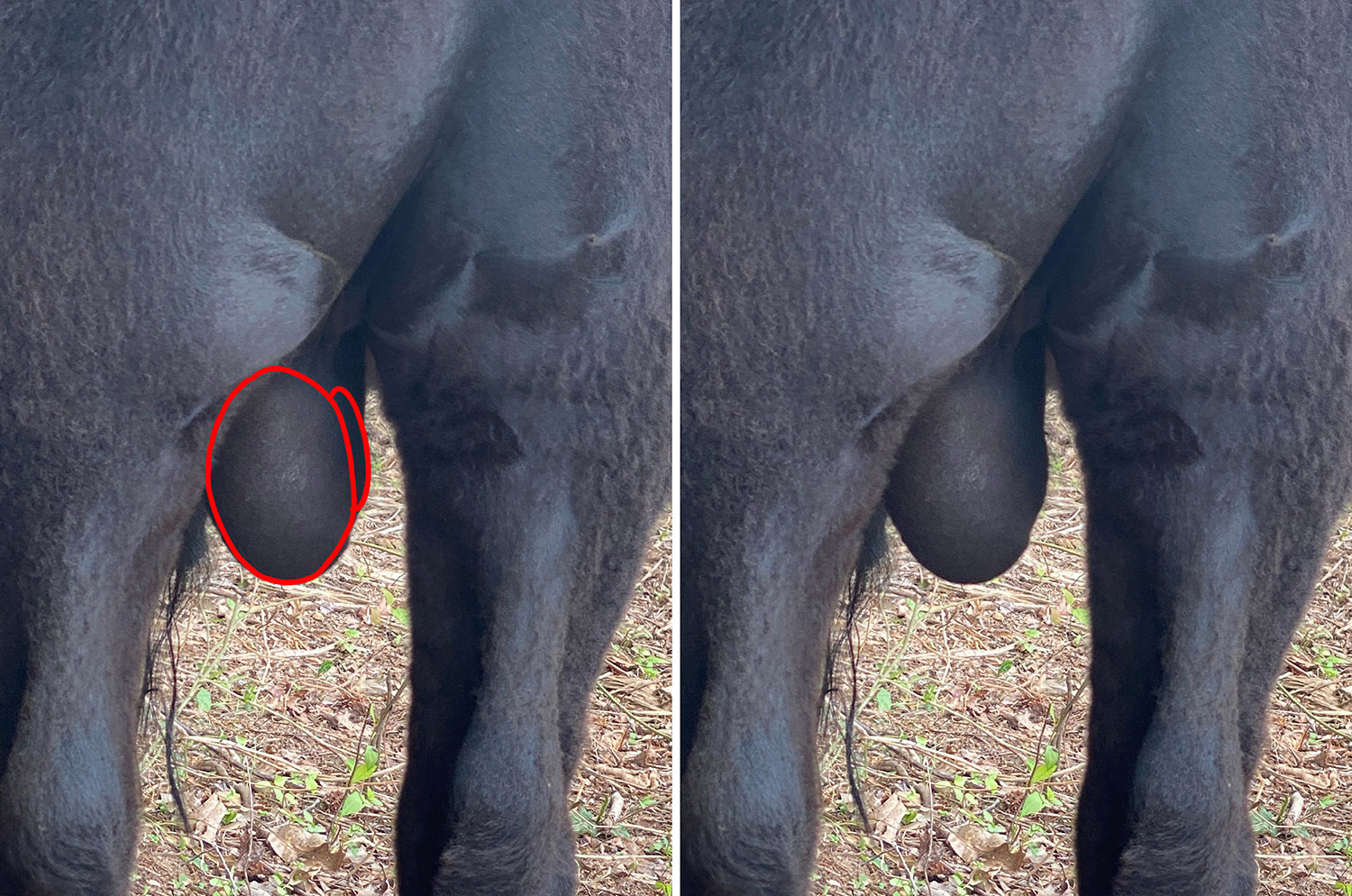
On the day of castration, our vet remarked that he was likely sterile because neither testicle was normal. This could have been avoided if we had simply palpated his testicles before purchase. Live and learn! If you didn't grow up on a farm it may seem awkward, however, I strongly suggest either you or a vet palpate the testicles of any bull you're considering regardless of age (Safely, in a squeeze chute if necessary!).
Never forget the bull is 50% of your herd. Due diligence matters here!
Regardless of age, a bull's testicles should be equally sized, bean-shaped, and firm to the touch. Ideally, the testicles should not be twisted right or left, but hang straight between the back legs. Observation is important because first glance can be misleading. This bull's testicles hang straight, but the photograph was taken at an angle that suggests they do not. Always make this observation in person and for yourself or at the very minimum, with good quality video.
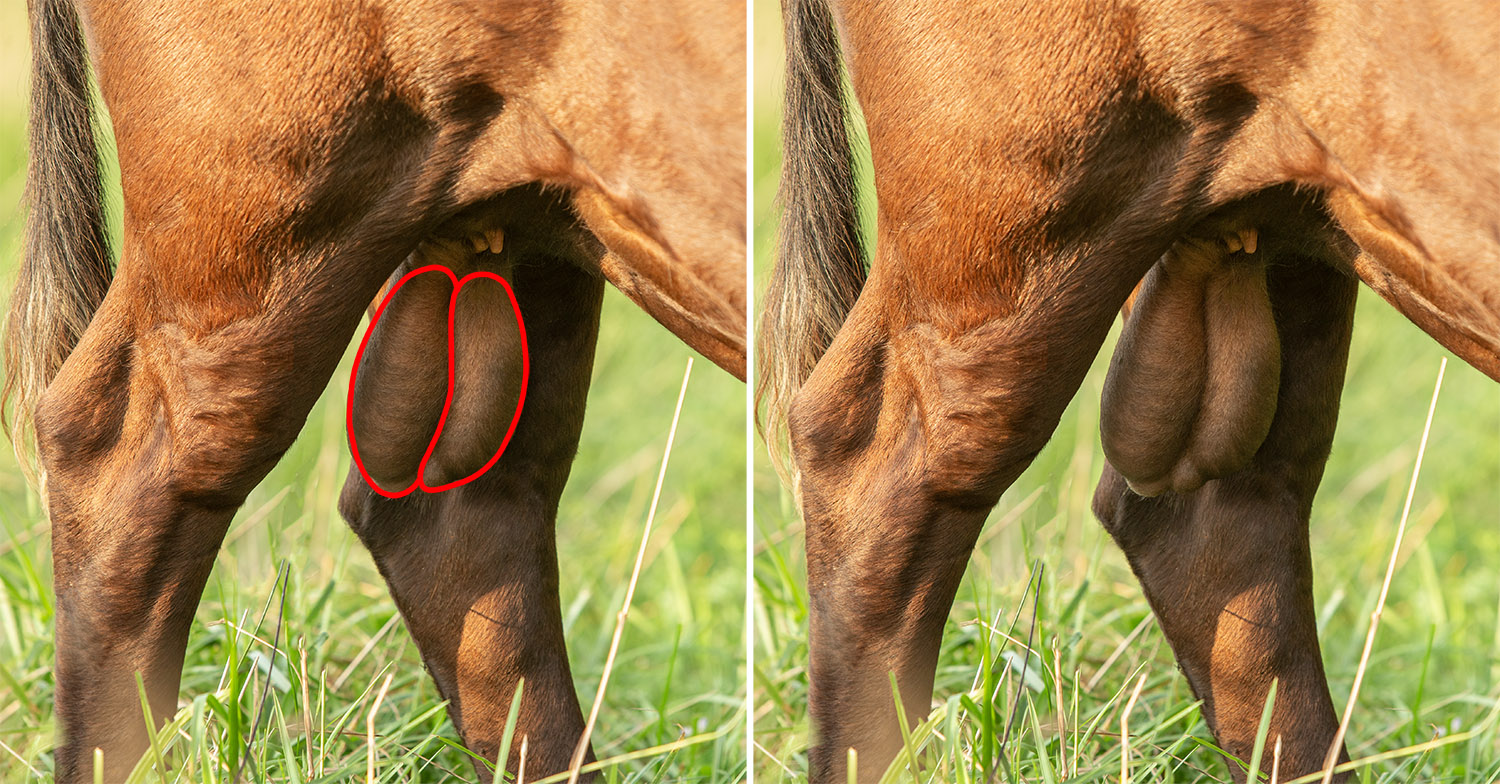
Depending on the ambient temperature, a bull can hold his testicles tight to the body making the scrotum appear wrinkled (some would say shriveled), or he may relax giving the scrotum a smooth appearance. This is normal and of no concern so long as the testicles themselves are equal in size and bean-shaped on palpation.
These two photographs were taken the same day of the same young bull.

The penis of a bull is inside the sheath which should be held tight to the abdominal wall without any loose, excess skin. The pink prepuce will often emerge before the penis. This is fine, however, you don't want to see the prepuce all the time. A bull that cannot retract the prepuce may have a problem and should be examined by a veterinarian.

Where are your Dexter bull's teats?
Yes, bulls have teats and their placement is indicative of what one can expect from the udder structure of his daughters. Therefore, it is vitally important to be aware of a bull's teat placement when selecting a herd sire. The proper placement of a bull's teats is on the abdominal wall at the juncture of the scrotum. There should be four small teats, evenly spaced and moderately sized (only two visible in this photograph because I refuse to stick my head under an adult bull to photograph all four). Having the udder history of the dam and grand-dams of the bull is ideal as it can give even greater insight into what to expect from his daughters.
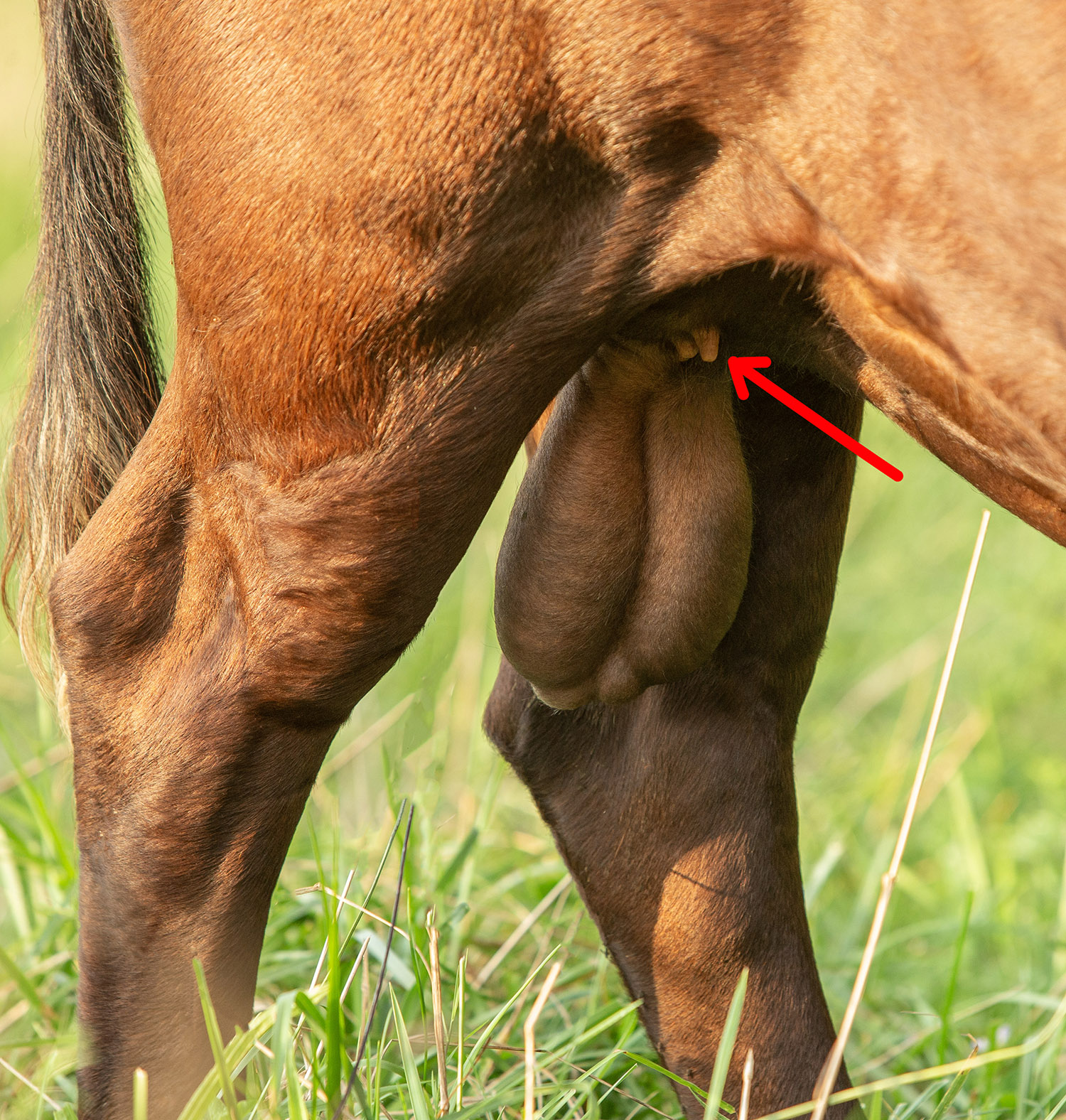
Breeding Soundness Exam
Another smart thing to do if you are purchasing an adult bull is to have a breeding soundness exam (BSE) performed. Just be aware that many vets are dismayed by the small size of Dexter bulls and will not perform the test. If the veterinarian is willing to do the BSE, they may not get a correct result if they are unaccustomed to working with Dexters. We had a BSE done on a Dexter bull by a veterinarian that literally had zero sperm present in the sample.
The vet advised us to butcher him!
It was suggested his scrotal circumference was too small and therefore he wasn't viable. His scrotal circumference was perfectly proportional for a Dexter. The problem is that there are no standards for anything outside conventional-sized breeds. The vet was unable to scale the test down to a Dexter because there was no data to reference.
We now take our bulls to a facility that specializes in semen collection for artificial insemination (AI). They are accustomed to the small stature of Dexter bulls and have no problem getting samples. That same bull condemned to the freezer by a veterinarian had a healthy sperm count just 30 days later and actually settled a cow two days prior to the veterinarian's exam ("settled" is farm terminology for "got pregnant")!

Disease Testing
Any bull you consider for a herd sire should have what I refer to as the "standard panel" for disease testing. He should be free of BLV, BVD, Johnes, Neospora, Anaplasmosis, Tuberculosis, and Brucellosis. In addition, he should also be free of PHA and Chondrodysplasia -- the two lethal genetic diseases some Dexter cattle carry (in reality, your entire herd should be disease free).
If you are purchasing a proven sire, you should require a Trich test. Trichomoniasis is a bovine venereal disease that can destroy your herd. When a bull is infected with trich, it transmits the disease to every female it services. Cows may either become infertile or abort their calves or both. When bulls are diagnosed with trich, it is considered a lifelong infection that is untreatable. Cows can also be potential carriers (a good reason to purchase only heifers!).
In Summary...
Most bulls are capable of settling cows, however, only a select few are capable of producing calves that consistently have all the most desirable qualities. It is worth all the time, effort, and extra expense to locate a high-grade sire. In doing so, you can rest assured that your herd is consistently moving toward superior Dexter qualities.

